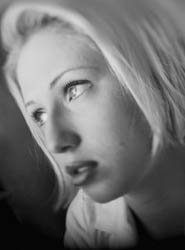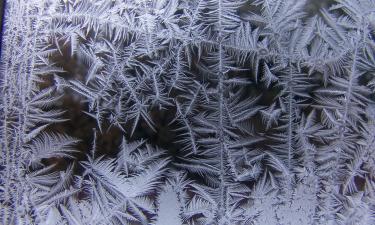Mysterious pain
 A specialized association of pain research has been founded in Russia
A specialized association of pain research has been founded in Russia
What sorts of pain do they study there, one might question? The following comments are provided by assistant professor of I.M. Sechenov’s neurological clinic, head of the pain department Valery Vladimirovich Alexeev.
The main problem arises when one starts experiencing long-lasting pain for no apparent reasons. More so, it can not only occur simply by itself but also within a person's outer body. It can even be said, even though it would not be 100% correct, that pain can get out of control and turn into a completely separate illness on its own.
Examples of such pains are relatively easy to find. A lot has been written about the so-called phantom-pains, when a person experiences sudden itch of a toe that had been amputated a long time ago. Another example: a woman feels strong pain in her chest. Her doctor does not find anything strange about and assures her that she is fine. Cardiologist assures the lady that her heart is in swell condition…She attends numerous doctors and no one discovers any abnormalities in her body. Yet the woman is not lying. What is the matter with her after all?
On the one hand, pain serves as a guardian of our organism. It informs one's brain and central nervous system about injuries or malfunctions of this or that organ. A human organism contains certain systems that are capable not only to feel pain but also to suppress it. However, it can also happen that while the cause of pain is no longer present, an individual continues to suffer. This means that the system of suppression has gone tired and has somewhat weakened. This is precisely what one ought to avoid.
The worse case scenario is when we have to deal with brain's pain memory. Due to the fact that pain often coincides with emotional traumas, pain memories tend to get imprinted in our brains for a long time. Recently, it has been discovered that depression and physical pain cause the same substances to be secreted in a female's organism.
Now imagine: depression triggers memory mechanism in a brain, thus extracting those memories of strong painful experiences that a woman had once felt. This painful experience, be it a stomachache, a backache, or a headache, becomes a sort of a mask of the real illness: depression. There are no drugs that can get rid of the pain. Instead, one should turn to antidepressants.
That is why I do not support the use of so widely advertised painkillers. A person should always look at the root of the problem, even though it isn't an easy task.
Several reasons that cause us suffering can appear to be quite unexpected ones. Surprising as it may seem, the source of our misfortunes often lies in our chewing muscles. Many kids, for instance, have a much smaller lower jaw. If you disregard showing the kid to an orthodontist, he/she might develop a defective bite. Due to the fact that chewing muscles are interconnected with those of the temple, a person will be likely to develop severe headaches as a result of his defective bite as he/she grows older.
Here is another example. Practically every single one of us is born asymmetrical. Left side of our faces slightly differs from the right one. One foot tends to be longer than the other. In fact, this isn’t hard to check: heels on the longer leg do wear off more. Our posture is often far from perfect as well. As our cervical vertebra suffers the most due to even minor imperfection in the spine, a person begins to experience pains in the forehead region, around eyes and the temple. By knowing all the peculiarities of the muscle corset, all of these consequences can be easily avoided.
Here is the most interesting aspect. In the course of a rather passionate conversation with your boss for instance, one experiences muscle stiffness. Afterwards, even though everything has gone smoothly, the person may still hide a bit of frustration and disappointment somewhere deep down in his soul. It is precisely this inner disappointment that prevents the muscles from relaxing completely.
You can be taught various relaxation techniques in specially designed pain centers.
Source: “Woman's Health”
Subscribe to Pravda.Ru Telegram channel, Facebook, RSS!




